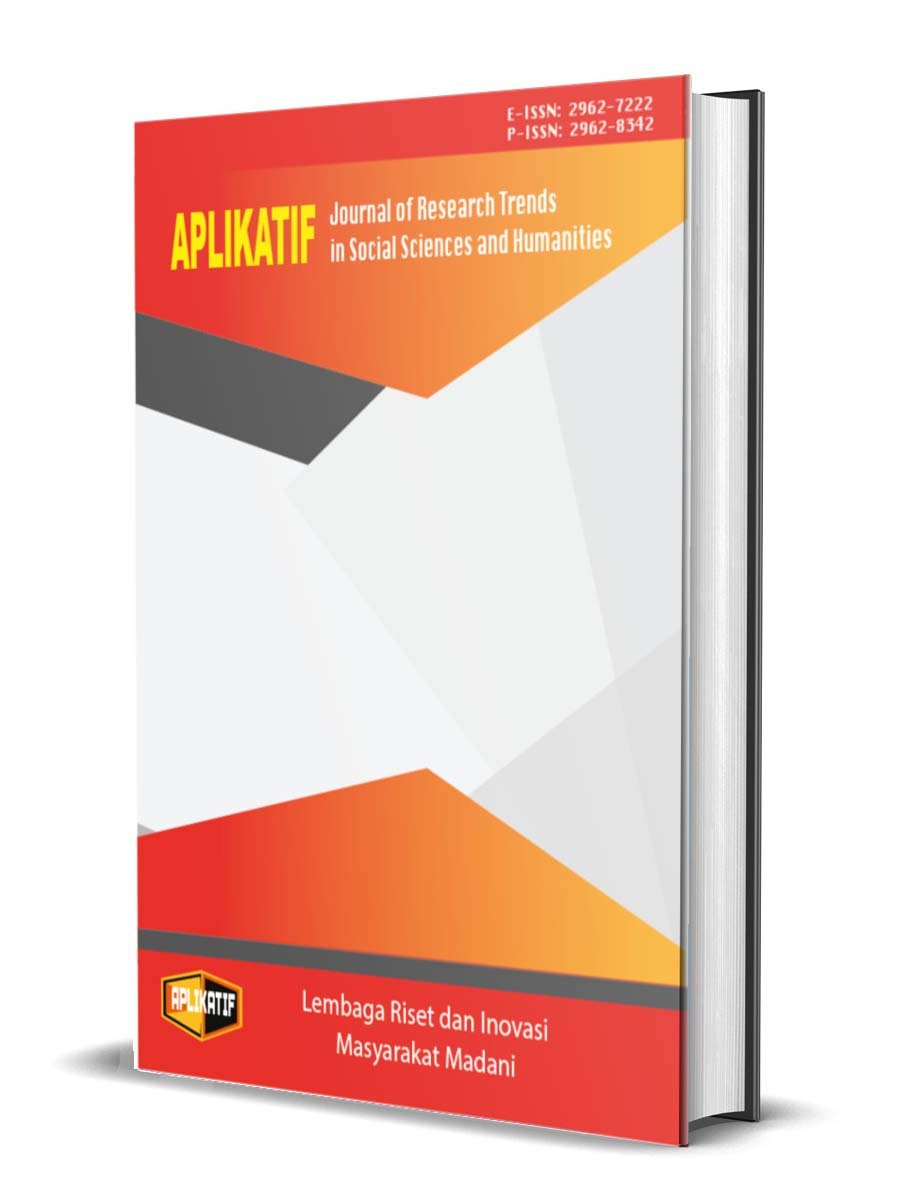The Impact of Candlestick Patterns and Stochastic Oscillator on Investment Interest in PT Akasha Wira Internasional Tbk's Stocks
https://doi.org/10.59110/aplikatif.v4i3.454
Keywords:
Candlestick Patterns, Stochastic Oscillator, Investment Interest, Technical Analysis, Capital MarketAbstract
The Indonesian capital market has experienced significant growth, marked by increasing retail investor participation—especially during the pandemic. Amid these dynamics, technical analysis has become a popular approach to investment decision-making, as it provides market signals based on historical price data. This study aims to analyze the impact of two technical indicators, Candlestick Charts and Stochastic Oscillator, on stock investment interest, with a case study on PT Akasha Wira Internasional Tbk listed on the Indonesia Stock Exchange. Using a descriptive quantitative approach, data were collected via questionnaires distributed to 50 retail investors and analyzed through multiple linear regression, preceded by validity, reliability, and classical assumption tests. The results indicate that both Candlestick Charts and Stochastic Oscillator have a positive and significant influence on investment interest, both partially and simultaneously. The Candlestick variable yielded a significance value of 0.042, while the Stochastic Oscillator demonstrated a stronger effect with significance < 0.001. Together, these indicators explain 44.7% of the variation in investment interest (*R² = 0.447*). These findings suggest that technical indicators can enhance investor confidence and attractiveness in making investment decisions. The study recommends improving retail investor education on technical analysis to promote literacy and rational, analysis-based investment participation.
Downloads
References
Deng, S., Yu, H., Wei, C., Yang, T., & Shimada, T. (2020). The profitability of Ichimoku Kinkohyo based trading rules in stock markets and FX markets. International Journal of Finance & Economics, 26(4), 5321–5336. https://doi.org/10.1002/ijfe.2067
Fadilah, W., Agfiannisa, D., & Azhar, Y. (2020). Analisis prediksi harga saham PT. Telekomunikasi Indonesia menggunakan metode Support Vector Machine. Fountain of Informatics Journal, 5(2), 45–54. https://doi.org/10.21111/fij.v5i2.4449
Ferennita, C., Hasan, H., & Astuti, E. (2022). Pengaruh literasi keuangan, advocate recommendation dan overconfidence terhadap pengambilan keputusan investasi saham oleh investor muda di Kota Semarang. Journal of Accounting and Finance, 1(1). https://doi.org/10.31942/.v1i1.7009
Fitriani, F., Falah, A., & Sugianto, I. (2024). Analisis tingkat risiko investasi saham pada sektor perbankan terdaftar di BEI tahun 2018–2022. Jurnal E-Bis (Ekonomi-Bisnis), 8(1), 382–394. https://doi.org/10.37339/e-bis.v8i1.1697
Hadi, D., Wiharno, H., & Yusuf, A. (2024). Faktor keputusan investasi saham dengan manajemen risiko sebagai variabel moderating. JEMASI: Jurnal Ekonomi Manajemen dan Akuntansi, 20(1), 117–130. https://doi.org/10.35449/jemasi.v20i1.785
Harahap, Z., & Ajabar, A. (2022). Program “Yuk Nabung Saham” dan reksadana dalam perspektif usaha kecil menengah (UKM) sebagai alternatif pemilihan investasi dan peningkatan pendapatan di Kota Prabumulih pada masa pandemi COVID-19. Islamic Banking: Jurnal Pemikiran dan Pengembangan Perbankan Syariah, 7(2), 237–262. https://doi.org/10.36908/isbank.v7i2.314
Hasanah, M., Fahruddin, A., & Tamami, B. (2021). Exchange Trade Fund (ETF) syariah: Alternatif investasi syariah yang halal dan menjanjikan. At-Tasharruf: Jurnal Kajian Ekonomi dan Bisnis Syariah, 3(2), 42–47. https://doi.org/10.32528/at.v3i2.6764
Lubis, M., & Kusuma, I. (2022). Analisis pertumbuhan investor ritel pada masa pandemi dan implikasi pajak penghasilan final atas penjualan saham di bursa. Jurnal Pajak Indonesia (Indonesian Tax Review), 6(2), 245–264. https://doi.org/10.31092/jpi.v6i2.1854
Mardiana, R., Saputra, M., & Hassandi, I. (2023). Anchoring bias dalam pengambilan keputusan investor ritel (studi peristiwa selama pandemi COVID-19). JUMANAGE, 2(2), 182–190. https://doi.org/10.33998/jumanage.2023.2.2.780
Ni, Y., Cheng, Y., Liao, Y., & Huang, P. (2020). Does board structure affect stock price overshooting informativeness measured by stochastic oscillator indicators? International Journal of Finance & Economics, 27(2), 2290–2302. https://doi.org/10.1002/ijfe.2273
Ni, Y., Liao, Y., & Huang, P. (2015). Momentum in the Chinese stock market: Evidence from stochastic oscillator indicators. Emerging Markets Finance and Trade, 51(sup1), S99–S110. https://doi.org/10.1080/1540496x.2014.998916
Patriya, E., Latif, A., & Handayani, H. (2023). Peramalan harga saham penutupan indeks harga saham gabungan (IHSG) menggunakan algoritma Long Short Term Memory (LSTM). Jurnal Ilmiah Ekonomi Bisnis, 28(2), 304–314. https://doi.org/10.35760/eb.2023.v28i2.7964
Santur, Y. (2022). Candlestick chart based trading system using ensemble learning for financial assets. Sigma Journal of Engineering and Natural Sciences – Sigma Mühendislik ve Fen Bilimleri Dergisi. https://doi.org/10.14744/sigma.2022.00039
Suryosumirat, R. (2023). Exchange Trade Fund (ETF) syariah sebagai alternatif investasi halal. Cakrawala Repositori Imwi, 6(6), 2264–2271. https://doi.org/10.52851/cakrawala.v6i6.536
Tobing, S., Saputra, M., & Putri, V. (2023). Pengaruh gross profit margin dan exchange rate terhadap harga saham. JIMAT (Jurnal Ilmiah Mahasiswa Akuntansi) Undiksha, 14(4), 945–952. https://doi.org/10.23887/jimat.v14i04.69577
Wang, J., Li, X., Jia, H., Peng, T., & Tan, J. (2022). Predicting stock market volatility from candlestick charts: A multiple attention mechanism graph neural network approach. Mathematical Problems in Engineering, 2022, 1–16. https://doi.org/10.1155/2022/4743643
Downloads
Published
How to Cite
Issue
Section
License
Copyright (c) 2025 Siti Amelia Neni Prawira

This work is licensed under a Creative Commons Attribution-ShareAlike 4.0 International License.
















